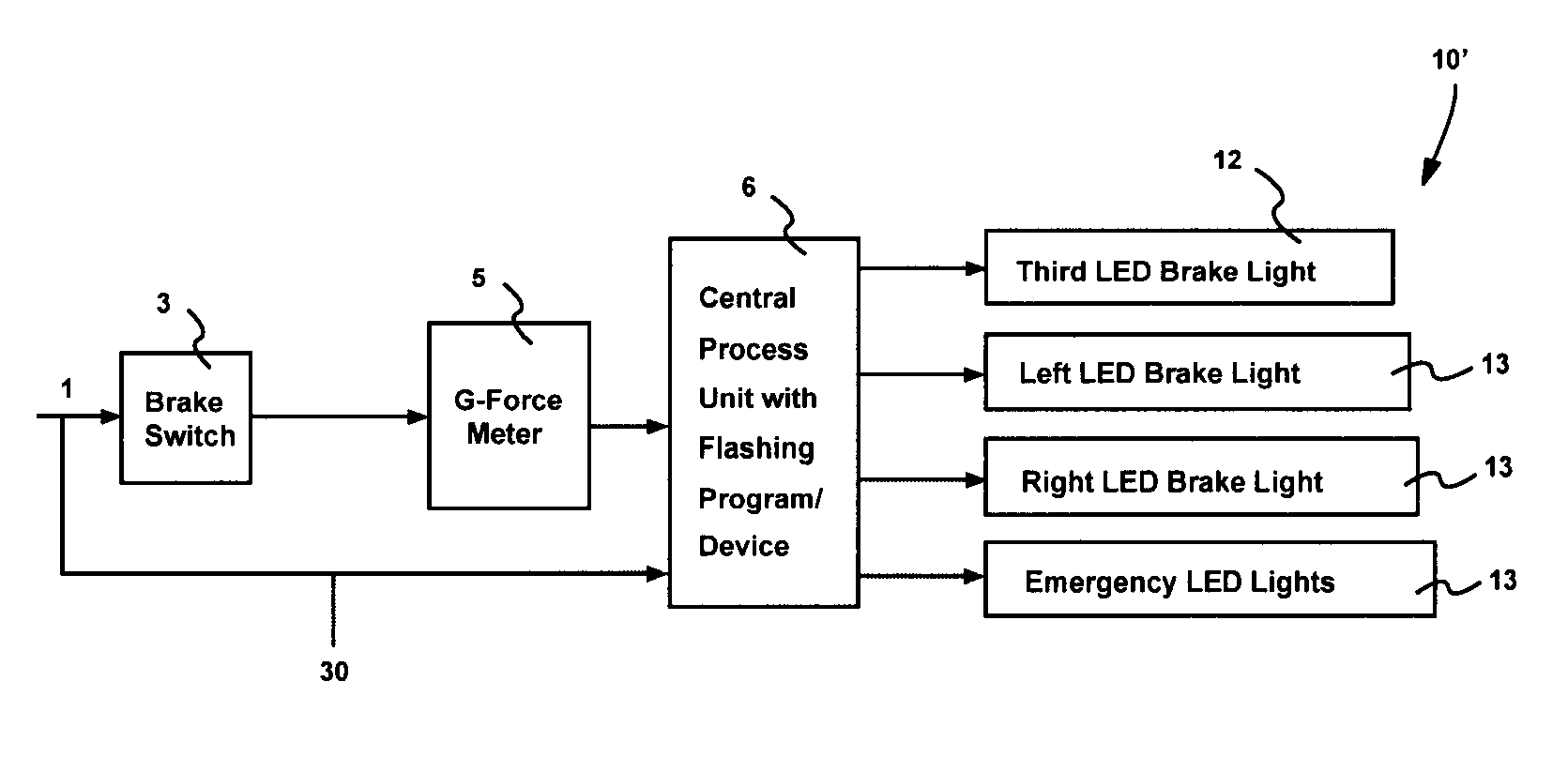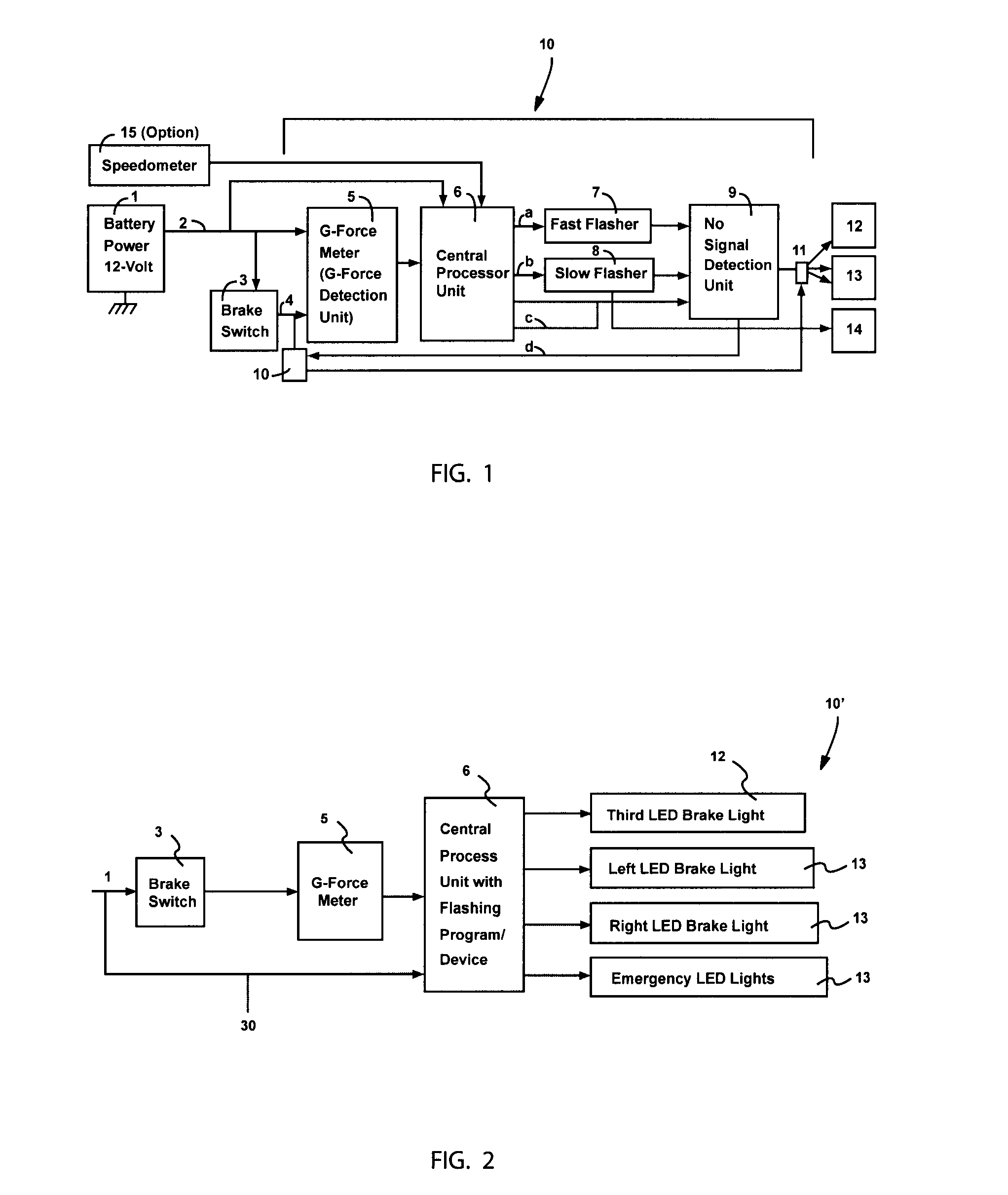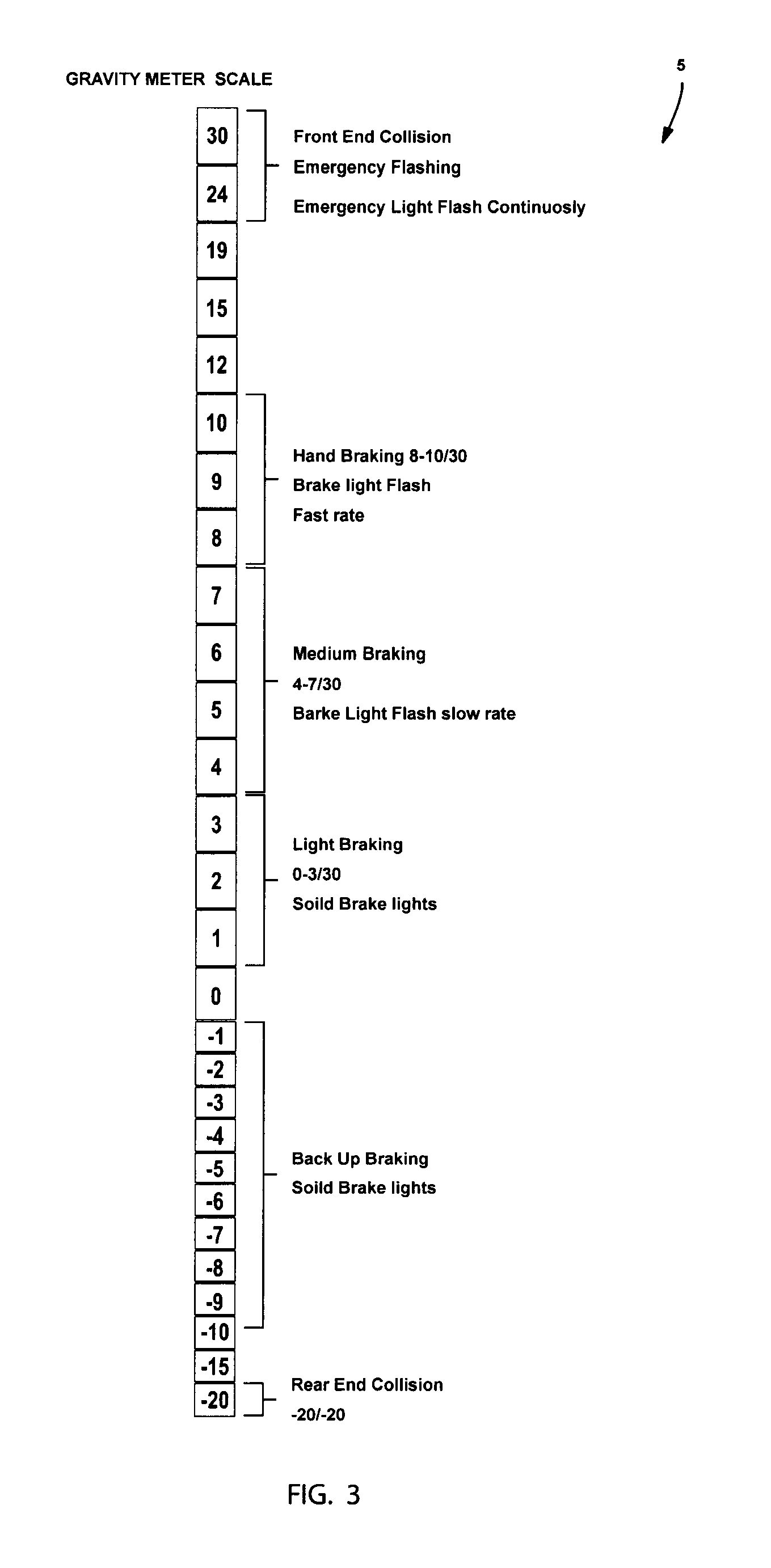Automatic flashing brake lights and associated method
a technology of automatic flashing and brake lights, applied in the direction of signalling/lighting devices, vehicle components, optical signalling, etc., can solve the problems of more injuries and property damage, the blending of brake lights and other lights at nighttime can become difficult to distinguish, and the problem is further intensified
- Summary
- Abstract
- Description
- Claims
- Application Information
AI Technical Summary
Benefits of technology
Problems solved by technology
Method used
Image
Examples
first embodiment
[0031]Referring initially to FIG. 1, a schematic diagram of the first embodiment is illustrated as including a 12-volt battery power supply source 1 electrically coupled to a 12-volt power line 2 when the car ignition switch is on. As long as the car ignition switch is on, the AFBL has a constant supply of 12-volt. Brake switch 3 is communicatively coupled to a G-force meter 5 via brake power line 2. In this manner, as a driver pushes down a brake pedal (not shown), a 12-volt brake power signal is transmitted to G-force meter 5. As brake pressure is applied to the brake pedal, digitalized G-Force meter 5 is activated and reads out the G-force value. The combination of such claimed elements solves the problem of generating false or premature G-force values when the vehicle swerves or switches gears abruptly, without actually braking, and thereby provides an unpredictable and unexpected result which is not rendered obvious by one skilled in the art because it calculates the G-force va...
second embodiment
[0040]Now referring to FIG. 2, a schematic diagram of the second embodiment is illustrated as including a 12-Volt power line 1 when the ignition switch is on, which is connected to brake switch 3. As the brake pedal is applied, a brake signal power goes into the G-force meter 5. According to the different G-force value this meter feeds its readings into the central processor unit 6. According to the different G-force reading, the processor 6 transmits different signals to different light units 12-14.
[0041]Such a central processor unit 6 may include a flashing program associated with each different light unit 12-14 such that flasher devices 7, 8 are not necessary. The combination of such claimed elements solves the problem of not knowing the rate of vehicle deceleration and thereby provides an unpredictable and unexpected result which is not rendered obvious by one skilled in the art because it flashes the vehicle brake lights are different frequencies and time periods commensurate w...
PUM
 Login to View More
Login to View More Abstract
Description
Claims
Application Information
 Login to View More
Login to View More - R&D
- Intellectual Property
- Life Sciences
- Materials
- Tech Scout
- Unparalleled Data Quality
- Higher Quality Content
- 60% Fewer Hallucinations
Browse by: Latest US Patents, China's latest patents, Technical Efficacy Thesaurus, Application Domain, Technology Topic, Popular Technical Reports.
© 2025 PatSnap. All rights reserved.Legal|Privacy policy|Modern Slavery Act Transparency Statement|Sitemap|About US| Contact US: help@patsnap.com



